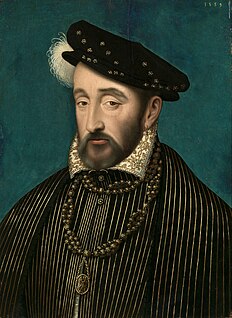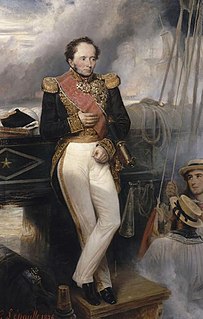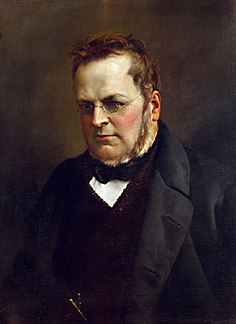Related Research Articles

Victor Emmanuel II was King of Sardinia from 1849 until 17 March 1861, when he assumed the title of King of Italy and became the first king of an independent, united Italy since the 6th century, a title he held until his death in 1878. Borrowing from the old Latin title Pater Patriae of the Roman emperors, the Italians gave him the epithet of Father of the Fatherland.

Henry II was King of France from 31 March 1547 until his death in 1559. The second son of Francis I and Duchess Claude of Brittany, he became Dauphin of France upon the death of his elder brother Francis in 1536.

Alexandre Dumas fils was a French author and playwright, best known for the romantic novel La Dame aux Camélias, published in 1848, which was adapted into Giuseppe Verdi's 1853 opera La traviata, as well as numerous stage and film productions, usually titled Camille in English-language versions.

Henri I de Bourbon, Prince of Condé was a French Prince du Sang and Huguenot general like his more prominent father, Louis I, Prince of Condé.

Duke of Châtellerault is a French noble title that has been created several times, originally in the Peerage of France in 1515. It takes its name from Châtellerault, in the Vienne region.

Louis-Marie, vicomte de Noailles was the second son of Philippe, duc de Mouchy, and a member of Mouchy branch of the famous Noailles family of the French aristocracy.
Admiral of France is a French title of honour. It is the naval equivalent of Marshal of France and was one of the Great Officers of the Crown of France.

Marie Henri Daniel Gauthier, comte de Rigny was the commander of the French squadron at the Battle of Navarino in the Greek War of Independence.

The Battle of Grenada took place on 6 July 1779 during the American Revolutionary War in the West Indies between the British Royal Navy and the French Navy, just off the coast of Grenada. The British fleet of Admiral John Byron had sailed in an attempt to relieve Grenada, which the French forces of the Comte D'Estaing had just captured.

Marie-Lætitia de Solms née Bonaparte-Wyse, was a French author and literary hostess.

Thomas-Alexandre Dumas Davy de la Pailleterie was a Saint Dominican Creole general in Revolutionary France. Along with Toussaint Louverture in Saint-Domingue and Abram Petrovich Gannibal in Imperial Russia, Thomas-Alexandre Dumas is notable as a man of African descent leading European troops as a general officer. He was the first person of color in the French military to become brigadier general, divisional general, and general-in-chief of a French army.

Denis Decrès,, was an officer of the French Navy and count, later duke of the First Empire.

Varennes is a commune in the Somme department in Hauts-de-France in northern France.
Events from the year 1861 in France.
Alfred-Marie Liénard, was a French physicist and engineer. He is most well known for his derivation of the Liénard–Wiechert potentials.

Count Charles Marie Tanneguy Duchâtel was a French politician. He was Minister of the Interior in the Cabinet of François-Pierre Guizot, losing office in the February Revolution.
Peter of Luxembourg was a son of John of Luxembourg, Lord of Beauvoir, and his wife Marguerite of Enghien. His inheritance included the counties of Brienne, Conversano and Saint-Pol.

Duchess Marie-Thérèse of Württemberg, known as the Duchess of Montpensier, is a German-born aristocrat. A daughter of the claimant to the royal throne of Württemberg, abolished in 1918, she was the first wife of Prince Henri, Count of Clermont. Marie-Thérèse is the mother of Prince Jean, Duke of Vendôme, head of the House of Orléans and Orléanist claimant to the French throne.

Princess Marie of Liechtenstein is the eldest daughter of Prince Henri, Count of Paris, Duke of France and his former wife Duchess Marie Thérèse of Württemberg. She is the wife of Prince Gundakar of Liechtenstein, a great-grandson of Prince Alfred of Liechtenstein.

Camillo Paolo Filippo Giulio Benso, Count of Cavour, Isolabella and Leri, generally known as Cavour, was an Italian statesman and a leading figure in the movement towards Italian unification. He was one of the leaders of the Historical Right and prime minister of the Kingdom of Piedmont–Sardinia, a position he maintained throughout the Second Italian War of Independence and Giuseppe Garibaldi's campaigns to unite Italy. After the declaration of a united Kingdom of Italy, Cavour took office as the first prime minister of Italy; he died after only three months in office and did not live to see the Roman Question solved through the complete unification of the country after the Capture of Rome in 1870.
References
- ↑ See Diane de Beausacq
- ↑ Cavour, Camillo Benso di (1894) Count Cavour and Madame de Circourt, Some Unpublished Correspondence; edited by Count Nigra; translated by Arthur John Butler. London: Cassell; p. 129
- ↑ Gustave Vapereau, Dictionnaire universel des contemporains: contenant toutes les personnes notables de la France et des pays étrangers, Hachette, 1858, p. 1633
- ↑ fr:Diane de Beausacq